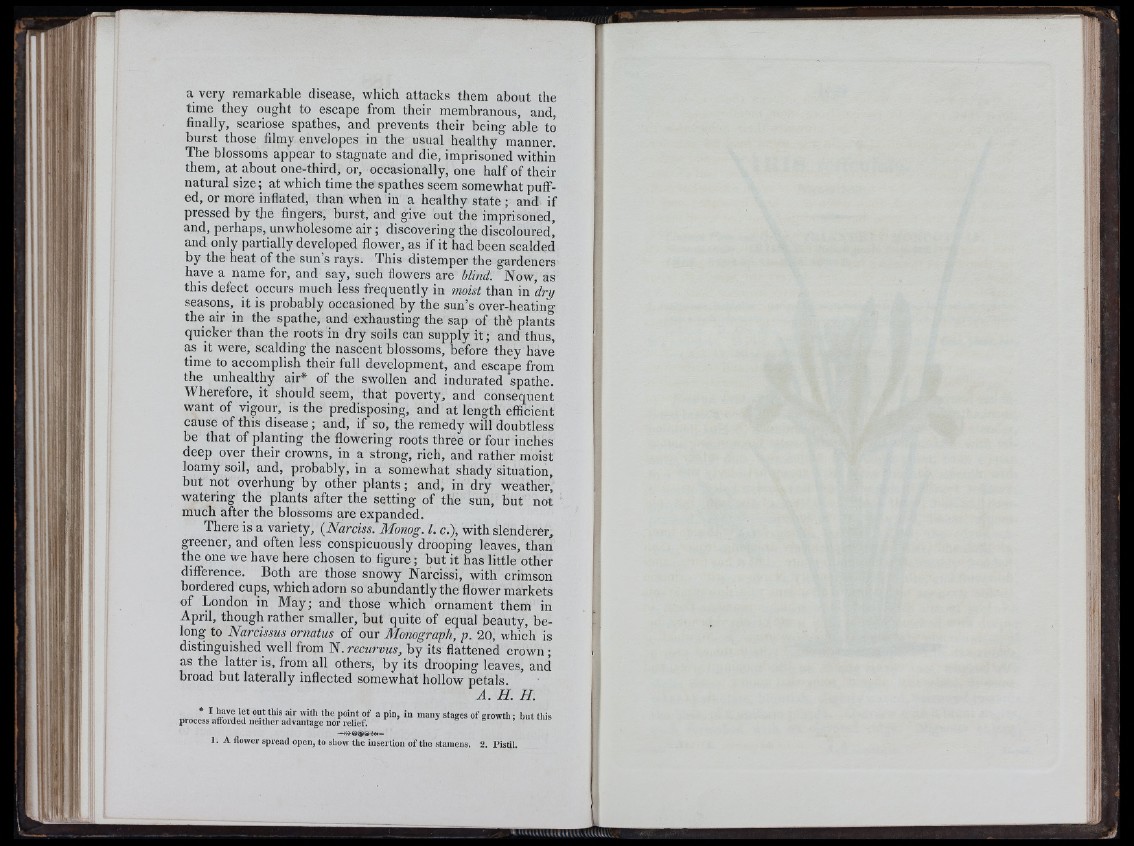
a very remarkable disease, which attacks them about the
time they ought to escape from their membranous, and,
finally, scariose spathes, and prevents their being able to
burst those filmy envelopes in the usual healthy manner.
The blossoms appear to stagnate and die, imprisoned within
them, at about one-third, or, occasionally, one half of their
natural size; at which time the spathes seem somewhat puffed,
or more inflated, than when in a healthy state ; and if
pressed by tjie fingers, burst, and give out the imprisoned,
and, perhaps, unwholesome air ; discovering the discoloured,
and only partially developed flower, as if it had been scalded
by the heat of the sun’s rays. This distemper the gardeners
have a name for, and say, such flowers are blind. Now, as
this defect occurs much less frequently in moist than in ’dry
seasons, it is probably occasioned by the sun’s over-heating
the air in the spathe, and exhausting the sap of thè plants
quicker than the roots in dry soils can supply it; and thus,
as it were, scalding the nascent blossoms, before they have
time to accomplish their full development, and escape from
the unhealthy air* of the swollen and indurated spathe.
Wherefore, it should seem, that poverty, and consequent
want of vigour, is the predisposing, and at length efficient
cause of this disease ; and, if so, the remedy will doubtless
be that of planting the flowering roots three or four inches
deep over their crowns, in a strong, rich, and rather moist
loamy soil, and, probably, in a somewhat shady situation,
but not overhung by other plants ; and, in dry weather,
watering the plants after the setting of the sun, but not
much after the blossoms are expanded.
There is a variety, {Narciss. Monog. I. c.), with slenderer,
greener, and often less conspicuously drooping leaves, than
the one we have here chosen to figure ; but it has little other
difference. Both are those snowy Narcissi, with crimson
bordered cups, which adorn so abundantly the flower markets
of London in May; and those which ornament them in
April, though rather smaller, but quite of equal beauty, belong
to Narcissus ornatus of our Monograph, p. 20, whic’h is
distinguished well from N. recurvus, by its flattened crown ;
as the latter is, from all others, by its drooping leaves, and
broad but laterally inflected somewhat hollow petals.
A. H. H.
„rA * ^ ''1 “ *■ PO‘" t o f a pin, in many stages o f growth ; but this
process afforded neither advantage nor relief.
3. A flower spread open, to show tlie insertion o f the stamens. 2. Instil.